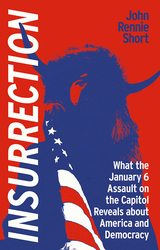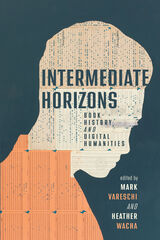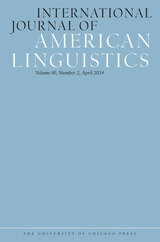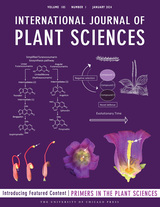14 start with C start with C
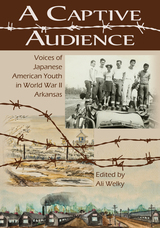
Intended for young-adult readers, this book explores important dimensions of Arkansas and U.S. history, including human rights and what it means to be an American.

More than nine generations of children grew up in America between the founding of the first English colonies and the end of the Civil War. This book, the first of three volumes that will provide the most complete documentary history of public provision for American children, traces the changing attitudes of the nation toward youth during the first two and one half centuries of its history.
The editors have divided volume I into three units of time--1600-1735, 1735-1820, 1820-1865 each of which represents a stage in the development of public policies toward children. The question raised in the first section is: What is the function of government or the public authority when the child is a subject, not a citizen, of a private family government? The second part deals with the question: How does the public sector respond when children, although still officially subject to familial authority, practice the doctrines of self-help, independence, and self-interest? The third part asks: How did the state and the adult public regard children in a society marked by political and social change, population mobility, and rapid economic growth? What was expected of children? What was done for them? What was denied them?
The editors have chosen documents chronicling all aspects of the welfare of children, including education, child health, care of dependent children, child labor, juvenile delinquency and the special problems of children of minority and disadvantaged groups. They have skillfully linked the papers together with interpretive introductions and have woven them into a fascinating and enlightening narrative. The documents have been selected from both published and unpublished materials, private diaries and correspondence, as well as the records of governmental and voluntary agencies on the local, state, and national levels. In addition to the time divisions, the documents are arranged geographically and topically, though the rigid maintenance of topical distinctions has been avoided so that related topics may be presented from different viewpoints and organized in the most meaningful and useful way.
Volume II will cover the events occurring between 1866 and 1932, and Volume III will deal with policies adopted and developed since 1933. Each volume will include selected contemporary illustrations.

Public provision for the rights of children has, at last, a complete documentary history. In three volumes, covering United States history from 1600 to the present, this is a monumental contribution in an area central to American domestic policy.
All aspects of the welfare of children are considered. The documents, as comprehensive as they are diverse, are woven into an enlightening narrative of the fundamental issues involved in the place of youth in America.
The concluding volumes present forty years of tumultuous history. They begin with the problems and protests of youth in the 1930s; their response to depression, war, and the draft; their organizations and participation in struggles for equality; and their changing legal status. With the advent of the New Deal and continuing into the Nixon administration, the sources show a growing popular emphasis on the rights and welfare of children as well as a dramatic shift in the position and commitment of the federal government. Policies and programs are many and vigorous, but gaps, protests, and inequalities persist.
Upon the appearance of the first volume, Children and Youth in America was hailed as "an important event in the history of child welfare in the United States." Now completed, these volumes constitute an indispensable reference and absorbing chronicle of American social history.

Although the number of people under twenty years of age in the United States rose from 17 million in 1860 to 47.6 million in 1930, the percentage of them in the total population declined sharply during the same seventy years from 51 percent to 38 percent. This declining proportion of children and young people to adults did not lessen concern for their welfare. On the contrary, as they became relatively less numerous, the young became in a way more visible, and their needs were more easily recognized.
This second of three volumes that trace the history of the nation's changing provisions for its youth covers the period from the end of the Civil War to the beginning of the New Deal. These were years rich in innovations which, although not fully realized, represented substantial advances in the welfare, education, and health of children. Much of the philanthropic energy of the late nineteenth and early twentieth centuries went into the provision of special facilities for children, who had formerly been treated in the same way as adults. State, and in some eases, federal legislation attempted to safeguard children against premature, excessive, and dangerous labor; sought to protect them against abuse. neglect, immorality, disease, and unsanitary surroundings: and compelled them to spend more time in school. The first White House Conference on the Care of Dependent and Neglected Children was convened by Theodore Roosevelt in 1909, and in 1912 the United States Children's Bureau was established. This single most important development in public provision for children during the early twentieth century signified the acceptance by the federal government of responsibility for promoting the health and welfare of the young.
In this two--book volume, major topics like the legal status of children, child health, and education have been broken down into specific areas so that the items of specialized concern are easily accessible. Some of the nearly 100 topics covered include birth control and abortion, the mothers' aid movement, theories and studies of juvenile delinquency, the progressive attack on child labor, and the child labor amendment. The Children's Bureau, the development of pediatric thought, the fight against infant mortality, child health and the Depression, the origin and development of the public high school, and the education of children of minority groups are also treated.
The text includes both published and unpublished, private and public documents. It is augmented with selected contemporary illustrations.
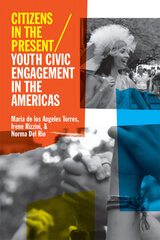

Synthesizing recent research regarding the prevention and control of adolescent smoking, this book offers the reader a convenient compendium of what is known about adolescents and tobacco use; it also highlights areas where additional research is needed. Based on their assessment of the considerable amount of information presented, the authors recommend various ways to help slow--or even reverse--the recent rise in teenage smoking. A comprehensive antitobacco program might include, for example, antismoking media campaigns based on social marketing strategies, clean indoor air laws, and the increase of cigarette prices.
Combating Teen Smoking will appeal to a broad spectrum of readers concerned about the problem of adolescent tobacco use, including policymakers who are actively seeking ways to help reduce teen smoking.
Peter D. Jacobson is Associate Professor, University of Michigan School of Public Health. Paula Lantz is Assistant Professor, University of Michigan School of Public Health. Kenneth Warner is Richard D. Remington Collegiate Professor of Public Health and Director, University of Michigan Tobacco Research Network. Jeffrey Wasserman is Consultant, the RAND Corporation and Senior Project Director, The MEDSTAT Group. Harold Pollack is Assistant Professor, University of Michigan School of Public Health. Alexis Ahlstrom is Research Associate, University of Michigan School of Public Health.
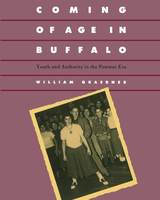
Pegged pants poodle skirts, record hops, rock ‘n’ roll, soda shops: in the interval between the bombing of Hiroshima and the assassination of John F. Kennedy, these were distinguishing marks of the "typical" postwar teenager-if there was a "typical" teenager. In this richly illustrated account of Youth in postwar Buffalo, William Graebner argues that the so-called Youth culture was really a variety of "disparate subcultures, united by age but in conflict over class, race, ethnicity, and gender." Using scrap books, oral histories, school Yearbooks, and material culture, he shows how Buffalo teenagers were products of diverse and often antagonistic subcultures. The innocuous strains of "Rock Around the Clock" muffled the seething gang loyalties and countercultural influence of James Dean, Marlon Brando, and Buffalo’s own "Hound Dog" Lorenz. Racial antipathies once held in check spilled out on Memorial Day, 1956, when white and black Youth clashed on board a take Erie pleasure boat in a "riot" that recast the city’s race relations for decades to come.
While exploring the diversity within Youth subcultures, Graebner examines the ways in which adults—educators, clergy, representatives of the media, and other authorities—sought to contain this generation. The Hi-Teen Club, Buffalo Plan dress code, record hops, graduation ceremonies, film censorship, and restrictions on secret societies and on corner lounging were all forms of social engineering that reinforced social and economic boundaries that were at the heart of the dominant culture. The prevailing adult influence on activities, attitudes, and style served to redirect the "misguided Youth" of the fifties and to obliterate their image from public memory. Although the media still portrays this decade as the golden age of cultural homogeneity, the diversity in musical preferences, hair and clothing styles, and allegiances to disc jockeys suggest the wide diversity of Youth experiences and challenges to adult authority that were part of coming of age in postwar America.
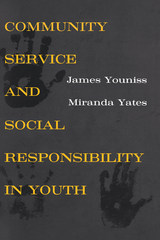
Using a case study from a predominantly Black, urban high school in Washington, D.C., Youniss and Yates build on the insights of Erik Erikson on the social and historical nature of identity development. They show that service at a soup kitchen as part of a course on social justice gives youth the opportunity to reflect on their status in society, on how society is organized, on how government should use its power, and on moral principles related to homelessness and poverty. Developing a sense of social responsibility and a civic commitment, youth come to see themselves as active agents in society.
The most authoritative work to date on the subject, this book challenges negative stereotypes of contemporary adolescents and illustrates how youth, when given the opportunity, can use their talents for social good. It will interest readers concerned with the development of today's youth and tomorrow's society.
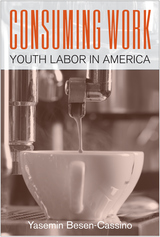
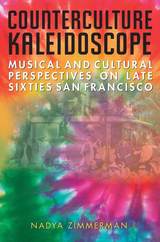
In a bold reconsideration of the late sixties San Francisco counterculture movement, Counterculture Kaleidoscope takes a close look at the cultural and musical practices of that era. Addressing the conventional wisdom that the movement was grounded in rebellion and opposition, the book exposes two myths: first, that the counterculture was an organized social and political movement of progressives with a shared agenda who opposed the mainstream (dubbed "hippies"); and second, that the counterculture was an innocent entity hijacked by commercialism and transformed over time into a vehicle of so-called "hip consumerism."
Seeking an alternative to the now common narrative, Nadya Zimmerman examines primary source material including music, artwork, popular literature, personal narratives, and firsthand historical accounts. She reveals that the San Francisco counterculture wasn't interested in commitments to causes and made no association with divisive issues---that it embraced everything in general and nothing in particular.
"Astute and accessible, Counterculture Kaleidoscope provides thought-provoking insights into the historical, cultural and social context of the San Francisco counter-culture and its music scene, including discussions of Vietnam and student protest, the Haight-Ashbury Diggers, the Grateful Dead, Led Zeppelin, Altamont, and Charlie Manson. A must for students and scholars of socio-musical activity and for all of us to whom music matters."
---Sheila Whiteley, author of The Space Between the Notes: Rock and the Counter-Culture and Too Much Too Young: Popular Music, Age and Gender
"The hippie counterculture has never garnered the scholarly attention accorded the new left and the black freedom struggle. Overviews of the period ritualistically mention it as part and parcel of that apparently incandescent era---the Sixties---but rarely capture its distinctiveness. Counterculture Kaleidoscope is a timely and provocative intervention in Sixties scholarship that significantly deepens our understanding of this important but understudied phenomenon."
—Alice Echols, Associate Professor, University of Southern California, and author of Scars of Sweet Paradise: The Life and Times of Janis Joplin
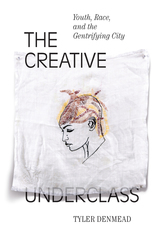
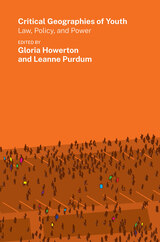
Scholarly and activist perspectives on identities often overlooked in the study of geography: youth and age.
Young people will bear the brunt of the impacts of present and emerging crises occurring at all scales, from the national to the global. This volume brings together scholars and activists from various backgrounds to analyze youth interactions with law and politics, focusing specifically on the US legal landscape. It uses the lens of youth geographies to consider how legal and political systems shape our spaces, and provides leading-edge perspectives through case studies of child labor, compulsory education, asylum claims, criminalization of youth, youth activism, and more.
Of special interest in this volume is the tension between young people as both objects of law and policy and creative agents of change. Despite being directly affected by law and policy, young people are denied access to many legally sanctioned paths to shape them. Yet youth find ways to work within and mold the social, political, and legal spheres and set the stage for alternative futures.
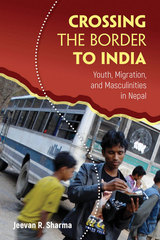
Given the limited economic opportunities in rural Nepal, the desire of young men of all income and education levels, castes and ethnicities to migrate has never been higher. Crossing the Border to India provides an ethnography of male labor migration from the western hills of Nepal to Indian cities. Jeevan Sharma shows how a migrant’s livelihood and gender, as well as structural violence impacts his perceptions, experiences, and aspirations.
Based on long-term fieldwork, Sharma captures the actual experiences of crossing the border. He shows that Nepali migration to India does not just allow young men from poorer backgrounds to “save there and eat here,” but also offers a strategy to escape the more regimented social order of the village. Additionally, migrants may benefit from the opportunities offered by the “open-border” between India and Nepal to attain independence and experience a distant world. However, Nepali migrants are subjected to high levels of ill treatment. Thus, while the idea of freedom remains extremely important in Nepali men’s migration decisions, their actual experience is often met with unfreedom and suffering.
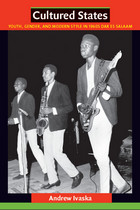
READERS
Browse our collection.
PUBLISHERS
See BiblioVault's publisher services.
STUDENT SERVICES
Files for college accessibility offices.
UChicago Accessibility Resources
home | accessibility | search | about | contact us
BiblioVault ® 2001 - 2024
The University of Chicago Press


